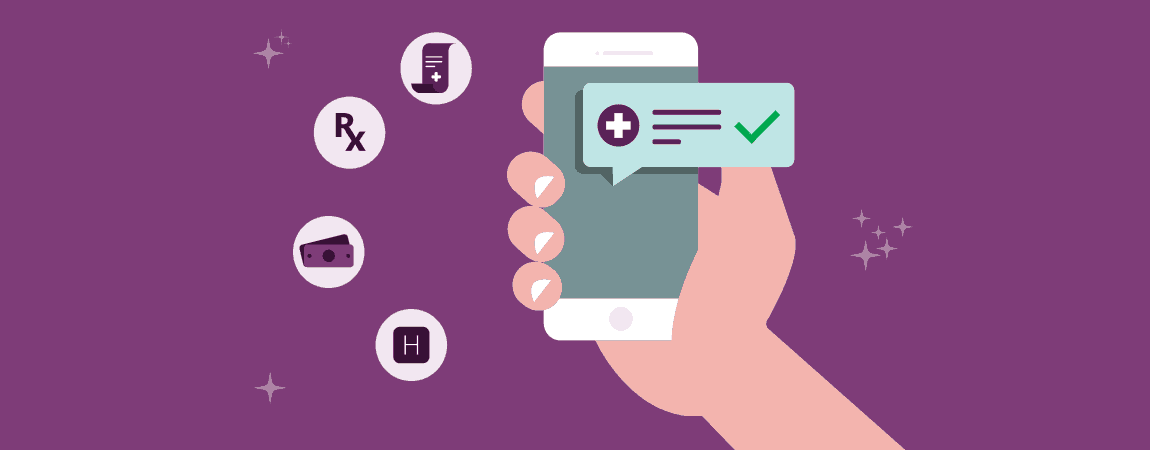How Employees Can Lower Healthcare Costs
Imagine getting a credit card from your company and never seeing the bill. Now further imagine that your company allows you to use this credit...
Connected Navigation Platform
Guiding to high-value care
Behavioral Health
Foster a mentally healthy workplace
EAP
Supporting holistic wellbeing
Virtual MSK Care
Reimagining musculoskeletal care
Virtual Primary Care
Powered by smart navigation
Surgery Centers of Excellence
Best-in-class surgical outcomes
Virtual Urgent Care
Immediate care, any hour of the day
Chronic Care
A new approach to chronic care
Integrations
Flexible to any strategy
4 min read
 Claire Wiseman Imber
:
January 21, 2022
Claire Wiseman Imber
:
January 21, 2022

For years, we’ve said that “healthcare spending is skyrocketing” or “the cost of care is climbing.” Employers will pay an average of over $16,000 — the price of a mid-size car — per employee family in healthcare spending this year. Employees themselves are far from immune; American households spend twice as much on healthcare as we did in the 1980s.
But while employees might know how to shop for shoes or find the best deal on dinner delivery, they're far less savvy when it comes to healthcare. So far, our education efforts haven't worked. Over one-quarter of respondents in a 2020 Policygenius survey had avoided care or treatment because they didn't know what their health insurance covered.
To change this dynamic, employers have to encourage healthcare consumerism. But like most things related to healthcare, this is easier said than done.
In most cases, it's not enough to tell employees they should shop for healthcare. The process is just too complicated.
In an ideal world, price transparency would make it possible for and employee healthcare consumer to find the information they needed to make smart healthcare choices. Pricing for procedures, imaging, and testing is notoriously murky (it's one reason a new federal rule will require most group health plans, and health insurance issuers in the group and individual market to disclose price and cost-sharing information to participants, beneficiaries, and enrollees).
The current lack of transparency means employees can stumble at countless steps along their path to care. Your first step is to identify these stumbling blocks. Maybe employees are going to out-of-network doctors out of habit or using your city's most expensive hospital system for every specialist visit. You can't fix what you don't understand. Identifying which choices drive up healthcare spending should be your first step in changing the employee paradigm.
Your review might also reveal some smart choices. You might find that employees are already using telehealth or virtual care tools, or going to your on-site clinic for regular needs. You can spend less time emphasizing the point solutions and cost-containment tools employees already love. Tracking utilization data can help you prioritize the knowledge gaps employees most need to hurdle in order to increase healthcare consumerism.
Once you've identified the choices driving up your healthcare cost, you'll need to understand what employees do (or more likely don't) know. For instance, employees may understand that they should choose an in-network provider, but the results of NOT doing so may be unclear. We know that the healthcare industry and the details of health insurance plans are murky even for seasoned experts, and the target is continuously moving.
With that in mind, reflect on your last few employee education campaigns. What did you cover? Did the message influence metrics throughout the year? New employees arrive with wildly different levels of benefits education, so try administering a survey to identify knowledge gaps.
Finally, remember that employees' spouses and dependents are responsible for a share of the healthcare cost, too. According to the Department of Labor, women make 80% of the healthcare decisions in the U.S. If those women aren't your employees, and you aren't launching family campaigns to engage and educate them, you're losing out on a chance to engage them in healthcare consumerism, too.
Don't wait until employees receive an unexpected bill to offer support. Identify the knowledge gaps and make a plan to address them beyond open enrollment.
Our healthcare system lacks price transparency, and it’s driving up costs.
You might guess that education is the answer. After all, if employees aren't already smart healthcare consumers, surely teaching them more about the subject will solve the problem, right?
Not so far. Up to this point, we know that education alone hasn't changed the conversation, and it's not for lack of trying. Employers and their HR teams invest significant resources in training each year. Employees may report they understand their benefits, yet when we surveyed HR professionals, they said they were still spending up to almost one-quarter of their week answering benefits questions.
To change employee consumerism, we must give them tools that help them make smarter choices.
To that end, our education efforts must include a walkthrough of any third-party navigation tools or provider search resources available to your employees. Better yet, offer the ability to compare prices in one centralized healthcare navigation solution (see more below). Don't just highlight these resources or give them a link in their benefits booklet. Show employees how these tools can help them identify high-value care in their geographic area.
Guide them through selecting a high-quality provider. Teach them to use the provider search tools on your insurance carrier's website. Illustrate the cost savings with real-life stories (and numbers).
In short, focus not on telling them to change the way they shop for healthcare, but on showing them how to use price transparency to do it.
Finally, provide employees with the last line of help for the moments they need to make healthcare decisions.
The obvious choice for live support is your HR team. We've heard that many HR pros get desperate messages from employees who need guidance about specific procedures. The problem with that system is twofold. For one, some employees may not feel comfortable broaching sensitive medical topics with their HR team. For another, it's a significant drain on your time and resources.
Luckily, healthcare navigation support is one role you can take off your HR team’s plate. When you invest in a healthcare navigation tool that combines live human support, on-demand chat assistance, and self-service price transparency and navigation solutions, you put the power of choice in the hands of employees.
Considering how employees struggle with healthcare consumerism, you really can't overemphasize this aspect of your benefits strategy. The good news is that by helping employees use consumerism, you'll also invest in higher satisfaction. They'll save money, love their benefits, and, most importantly, know exactly how to find high-value care.
This post was originally published in 2020. It was updated in January 2022.

Imagine getting a credit card from your company and never seeing the bill. Now further imagine that your company allows you to use this credit...

Companies are losing the battle against rising healthcare costs without healthcare guidance. Costs are continuing their steady climb with annual...

Employer healthcare costs climb every year. For individuals, the stakes are perhaps even higher.